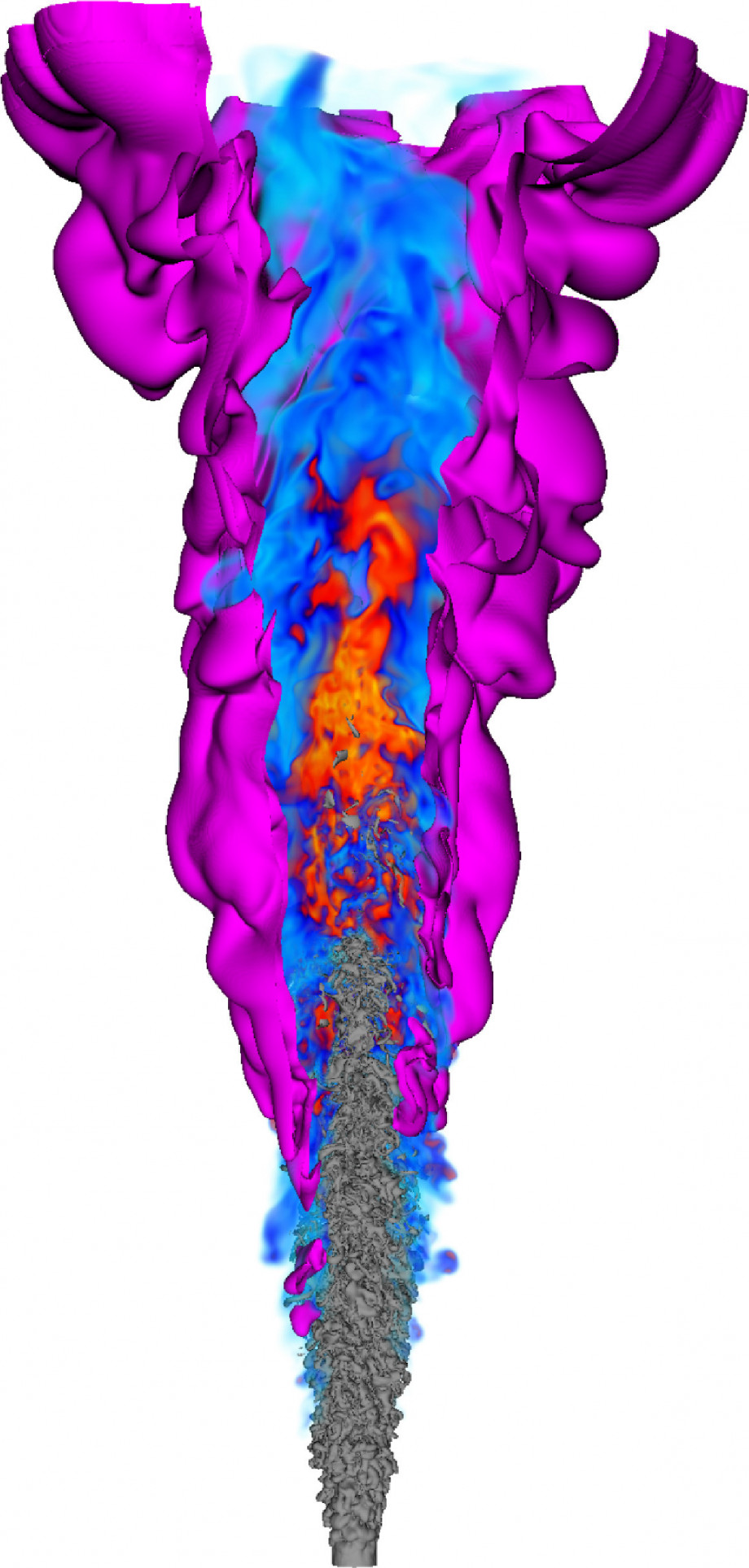The ability to create and control fire was one of the earliest human technologies. For more than a million years we’ve been using flames to cook and power our lives. In the last few hundred years, fire and controlled flame have been used for powering transport and electricity generation. Yet for all that time, the precise mechanisms of how flames form and grow inside engines are still uncertain. This is due to strong interactions between turbulent fluid flow and the combustion chemistry inside the engines, which occur across a huge range of scales – from tens of centimetres down to hundreds of nanometres.
Almost impossible to physically measure with any level of detail, observing flames in full detail in engine conditions requires computational modelling. The most accurate modelling is through Direct Numerical Simulation (DNS). Researchers use all of the physical and chemical equations that govern the reactions and interactions of the molecules involved to simulate each step of flame formation, giving exquisite, physically accurate detail in the results. DNS comes at a cost: the calculations required are extremely intensive, taking millions of hours of computing to produce the result.
This research looking into both diesel and hydrogen combustion is conducted by Professor Evatt Hawkes from the University of New South Wales and colleagues, supported by meritorious grant schemes including the National Computational Merit Allocation Scheme and the Australasian Leadership Computing Grants, as well as early-access allocations on the Gadi supercomputer. The team requires some of the largest compute grants in the country to do their simulations. Recent simulations required a grid with more than 1 billion points, evolving through 10,000 time steps for more than 50 variables each.
Depending on the software, each simulation can use up to 20,000 processors at a time, with the code highly tuned for running at the largest scales. Some of the software can adjust the spacing and resolution of the grid it is working with to get the highest performance and best results from the simulation. As the flame being simulated forms, grows and expands into the entire grid, the highest resolution portions of the grid expand to suit it.
Recent research efforts have looked into the exact characteristics of diesel flames as they form inside large engines. More and more, the researchers are turning to hydrogen as a combustible fuel source of the future. While the software is the same, the scientific processes of combustion are quite different for hydrogen compared with the previous fossil fuels. The next generation of engines will use new kinds of fuels and new combustion concepts to power and transport our world.
In coming years, the research team will continue to develop and improve their simulations of hydrogen combustion, learning from the experience about how we should design the future engines of ships and electricity generators.
